Basketball
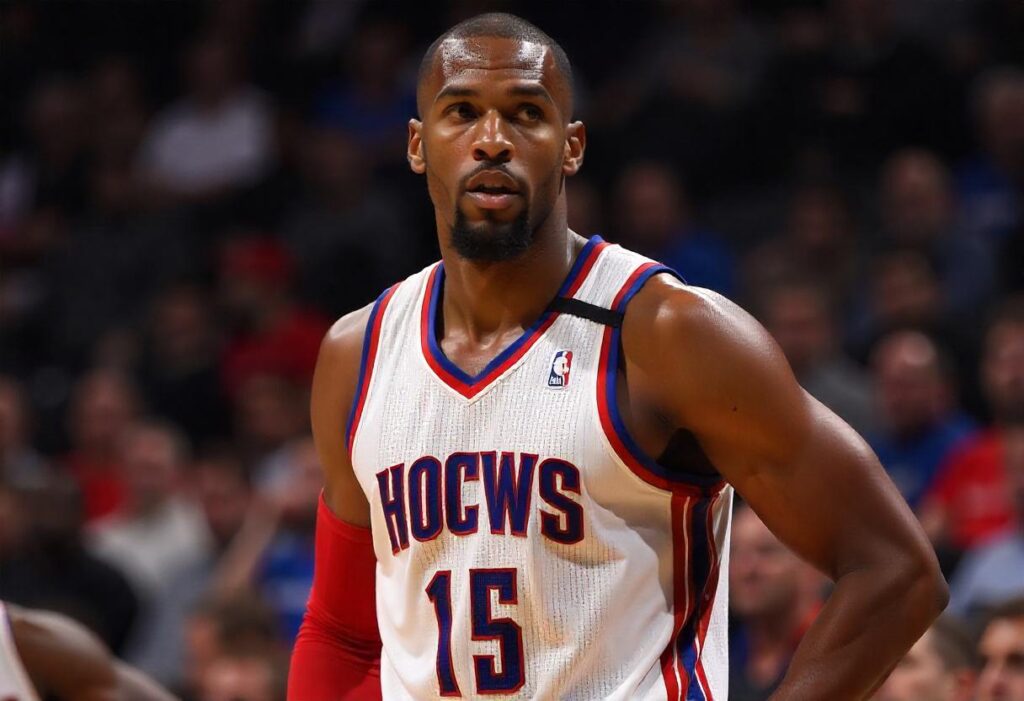
Why the NBA's Best Role Players Are Just as Crucial as Superstars
We love to celebrate the superstars. The highlight-reel dunks, the game-winning shots, the MVP awards – these are the moments and accolades that dominate the headlines. But behind every championship team, behind every successful franchise, there’s a crucial supporting cast. These are the role players, the unsung heroes who do the dirty work, fill the gaps, and often make the difference between winning and losing.
It’s time to give these players the spotlight they deserve. Because in the NBA, role players aren’t just supporting characters – they are essential to the plot.
More Than Just «Role Players»: Defining Their Value
The term «role player» can sometimes sound dismissive, but it shouldn’t. The best role players are highly skilled, intelligent, and possess a deep understanding of the game. Their value lies in their ability to:
Excel in Specific Areas: Role players are specialists. Some are elite defenders, locking down opponents and creating turnovers. Others are sharpshooters, spacing the floor and knocking down crucial threes. Still others are rebounders, energy guys, or veteran leaders who provide stability and experience.
Complement Superstars: The best role players understand their role within the team structure. They know how to play alongside superstars, making their jobs easier and maximizing their impact. They fill the needs that the stars don’t, creating a balanced and cohesive unit.
Embrace Sacrifice: Role players often sacrifice personal stats and individual recognition for the good of the team. They are willing to do the unglamorous tasks, to accept fewer shots, and to prioritize team success over personal glory. This selflessness is invaluable.
Provide Consistency and Reliability: Championship teams need players they can count on night after night. Role players provide that consistency. They may not always make the highlight reels, but they consistently contribute positive plays, minimizing mistakes and maximizing their strengths.
Examples of Elite Role Players Today:
The NBA is full of outstanding role players who elevate their teams:
Draymond Green (Golden State Warriors): Perhaps the quintessential modern role player. Not a scorer, but a defensive genius, playmaker, and emotional leader who is absolutely vital to the Warriors’ dynasty.
Jrue Holiday (Milwaukee Bucks): A lockdown defender, capable playmaker, and clutch scorer. He’s the «third star» on the Bucks, but his role is arguably just as important as Giannis and Middleton’s.
Marcus Smart (Boston Celtics): Defensive Player of the Year, known for his toughness, hustle, and ability to make winning plays on both ends of the court.
Kentavious Caldwell-Pope (Denver Nuggets): A 3-and-D specialist who provides crucial spacing and perimeter defense for the Nuggets.
Players like: Alex Caruso, Gary Payton II, Robert Covington, and many others who excel in specific areas and contribute to winning basketball.
Building a Winning Team: It Takes More Than Stars
While superstars are essential for any team with championship aspirations, they can’t do it alone. The best teams are built with a strong foundation of talented and dedicated role players who complement their stars and elevate the team as a whole.
So next time you watch an NBA game, pay attention to the role players. Watch their defensive rotations, their hustle plays, their timely shots. You might just realize that the real magic of basketball often happens in the contributions of these unsung heroes.
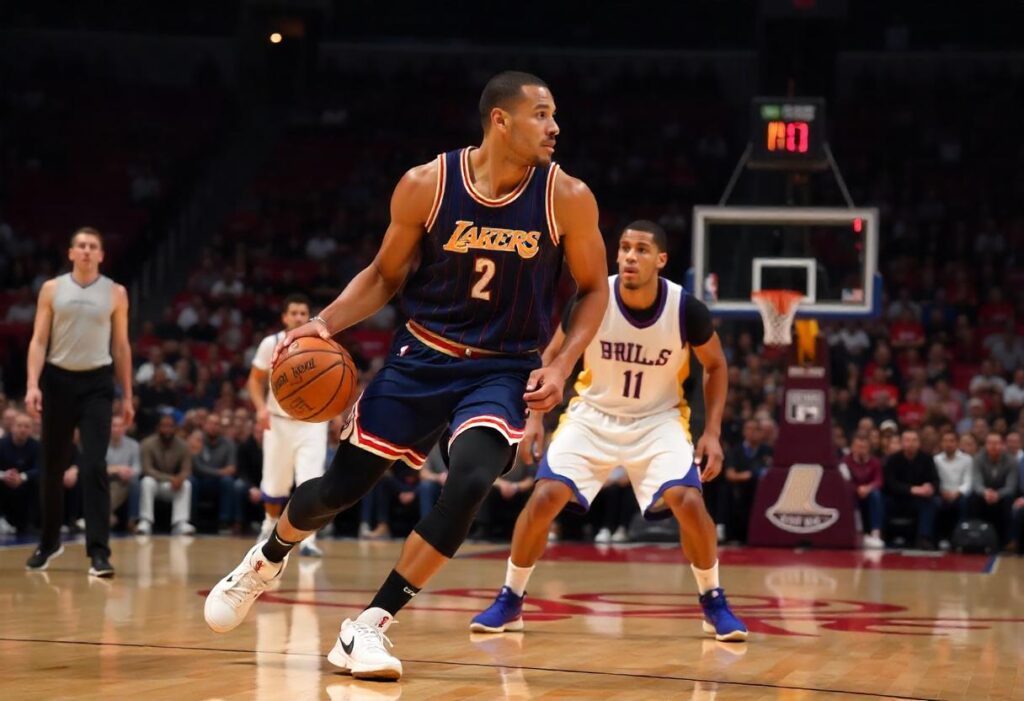
The Lost Art of the Mid-Range Jumper: Is it Time for a Comeback?
In today’s NBA, the three-pointer is king. Spacing the floor, launching shots from beyond the arc – it’s the dominant offensive philosophy. But amidst the three-point revolution, has something been lost? Has the mid-range jumper, once a staple of the game, become a forgotten art?
For years, players like Michael Jordan, Kobe Bryant, and Dwyane Wade built their legacies on their mastery of the mid-range. Pull-up jumpers, fadeaways, turnaround shots – these were weapons of choice for the game’s elite. But in the analytics-driven modern NBA, the mid-range shot is often deemed inefficient, a «bad shot» compared to the value of a three-pointer or a shot at the rim.
Is this assessment fair? And is it possible that the mid-range jumper is poised for a comeback?
The Case Against the Mid-Range (According to Analytics):
The argument against the mid-range is simple: it’s statistically less efficient than other shot types.
Lower Point Value: A mid-range shot, even if made at a high percentage, is still only worth two points. A three-pointer, even if made at a lower percentage, offers a higher potential points per possession.
«Less Efficient» Location: Analytics favor shots at the rim (high percentage) and three-pointers (higher point value). Mid-range shots, statistically, fall in between, often considered the «least efficient» area on the court.
Emphasis on Spacing: Modern offenses prioritize spacing and driving lanes. Mid-range shots can sometimes clog the paint and disrupt offensive flow, especially if taken early in the shot clock.
Why the Mid-Range Still Matters (and Could Return):
Despite the analytics, there are compelling reasons why the mid-range jumper remains a valuable skill and might be due for a resurgence:
Counter to Modern Defenses: Defenses are now hyper-focused on preventing three-pointers and shots at the rim. This can sometimes leave the mid-range area open. Players who can consistently hit mid-range shots can exploit these defensive strategies.
Variety and Unpredictability: Over-reliance on three-pointers can make an offense predictable. Incorporating mid-range shots adds variety and unpredictability, making it harder for defenses to game plan.
Clutch Situations: In late-game, high-pressure situations, defenses tighten up, and driving lanes and three-point opportunities become harder to come by. A reliable mid-range jumper can be a crucial weapon when the game slows down and space is limited. Think about those iconic Jordan and Kobe fadeaways in the clutch.
Player Skill and Talent: Ultimately, basketball is about skill. Players who have dedicated years to mastering the mid-range jumper shouldn’t abandon it simply because analytics suggest it’s «inefficient.» For some players, it’s a natural and highly effective part of their game.
Signs of a Potential Comeback?
While the three-pointer is still dominant, we are starting to see some players and teams subtly incorporate more mid-range into their offense. Players like Kevin Durant, DeMar DeRozan, and even some younger players are showcasing the effectiveness of a well-timed and well-executed mid-range jumper.
Perhaps we are entering an era of tactical counter-adjustments. As defenses become more geared towards stopping the three, offenses may start to rediscover the value of the mid-range, not as a primary option, but as a strategic weapon to keep defenses honest and unlock new offensive dimensions.
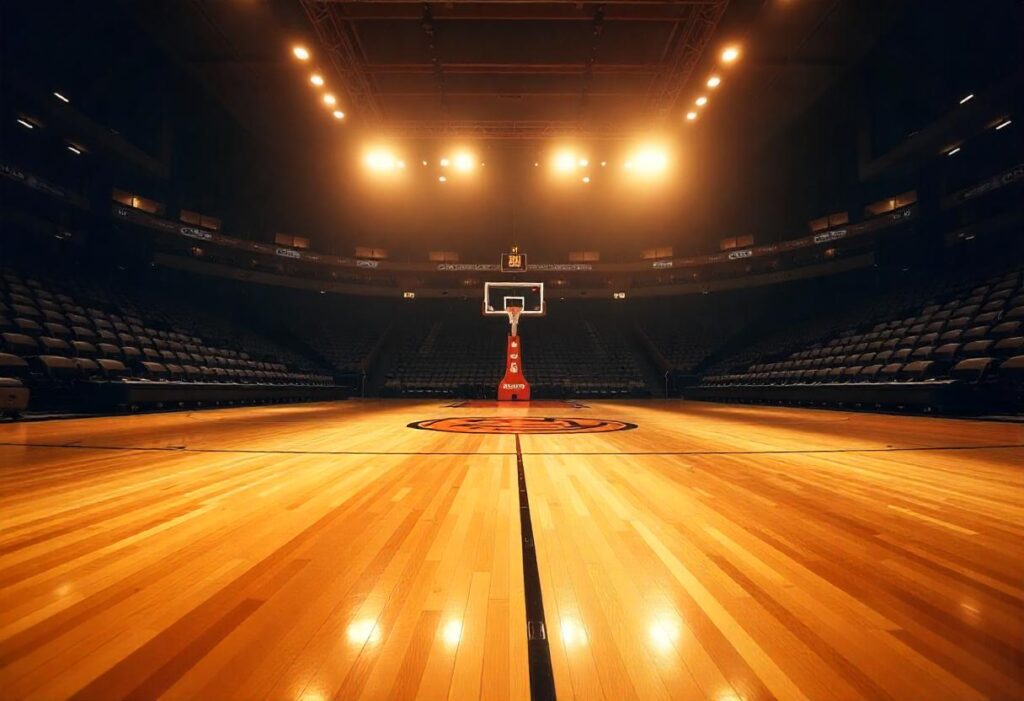
Beyond the Box Score
We obsess over stats in basketball. Points, rebounds, assists, steals, blocks – the box score is our go-to for evaluating player performance. And while stats are certainly important, they don’t tell the whole story. There’s a whole realm of intangibles in basketball – the qualities that don’t always show up in numbers, but are just as vital to winning.
These intangibles – hustle, basketball IQ, and leadership – are the invisible threads that weave together championship teams. They are the qualities that separate good players from great ones, and winning teams from also-rans.
Hustle: The Energy that Fuels Success
Hustle is about effort, energy, and relentless work ethic. It’s about:
Loose Balls and 50/50 Plays: The player who dives for loose balls, fights for rebounds, and wins those crucial 50/50 possessions. These plays often don’t show up prominently in the box score, but they swing momentum and create extra possessions.
Relentless Defense: Hustle on defense means constant movement, active hands, pressuring the ball, and never giving up on a play. It’s about making the opponent work for every point.
Setting the Tone: Players who hustle set a tone for the entire team. Their energy is contagious, lifting the spirits and effort level of their teammates.
Basketball IQ: The Brains Behind the Game
Basketball IQ (or BBIQ) is about understanding the game at a high level. It encompasses:
Court Vision and Passing: Seeing plays develop before they happen, making smart passes, and finding open teammates in the right spots.
Defensive Awareness: Understanding rotations, anticipating opponent moves, and making smart defensive decisions.
Situational Awareness: Knowing the game situation, understanding time and score, and making intelligent decisions in crucial moments.
Making the Right Play: Basketball IQ is about consistently making the right basketball play, even if it’s not the flashiest or most statistically driven option.
Leadership: Guiding the Team On and Off the Court
Leadership in basketball is multifaceted. It includes:
Vocal Leadership: Communicating effectively on the court, directing teammates, and providing encouragement.
Leading by Example: Demonstrating the desired work ethic, attitude, and commitment through personal actions.
Holding Teammates Accountable: Challenging teammates to be better, pushing them to reach their potential, and maintaining team standards.
Creating a Positive Culture: Leaders contribute to a positive team environment, fostering trust, camaraderie, and a winning mentality.
Finding Players with Intangibles:
Intangibles are harder to scout and measure than physical attributes or box score stats. They often emerge through observation, coaching, and understanding a player’s personality and character. Teams that prioritize these qualities in player evaluation often build more successful and sustainable franchises.
While we’ll always be fascinated by highlight plays and big numbers, let’s not forget the crucial role of intangibles in basketball. Hustle, IQ, and leadership are the often-overlooked ingredients that truly define winning basketball and create lasting legacies.
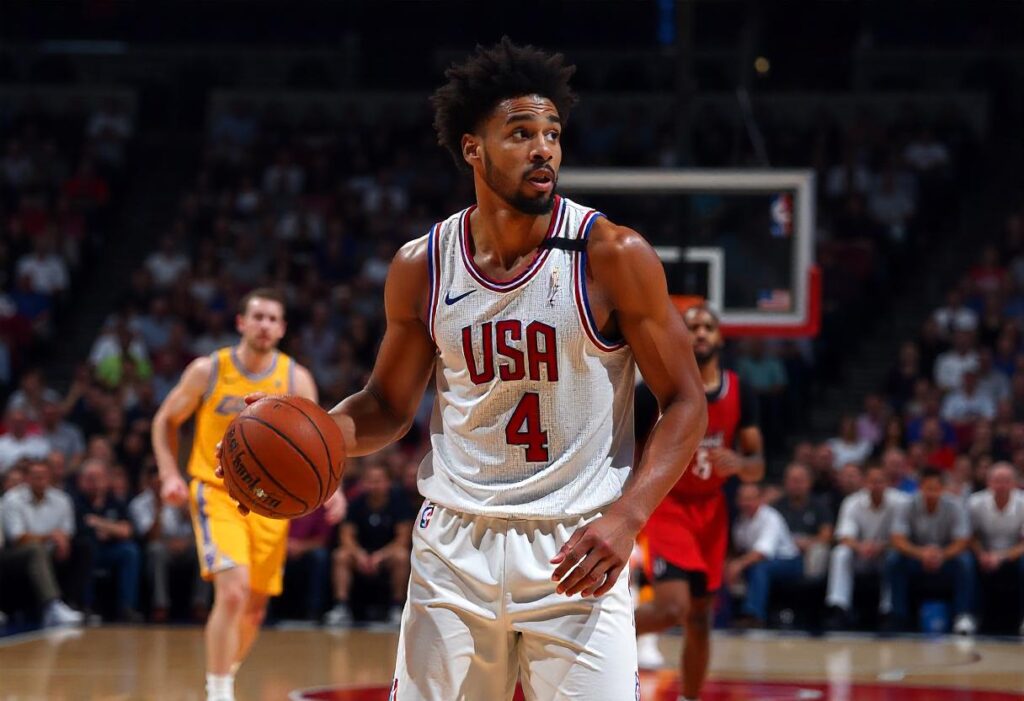
The NBA's International Explosion
The NBA’s International Explosion: How Global Talent is Reshaping the League
The NBA has always been a global game, but in recent years, the influx of international talent has reached unprecedented levels. Players from around the world are not just participating in the NBA – they are dominating it, winning MVP awards, leading their teams to championships, and fundamentally reshaping the landscape of the league.
This international explosion is not just a trend; it’s a profound shift in the NBA’s identity and a testament to the globalization of basketball. Let’s explore how this global talent wave is impacting the league and what it means for the future of the sport.
From Pioneers to Dominance: A Historical Perspective
The journey of international players in the NBA is a fascinating one:
Early Pioneers: Players like Yao Ming, Dirk Nowitzki, and Manu Ginobili paved the way, proving that international players could not only succeed but become superstars in the NBA. They broke down barriers and inspired generations of players overseas.
Growing Numbers: Over the past decade, the number of international players in the NBA has steadily increased. Scouting networks have expanded globally, and young players from all corners of the world are now actively pursuing NBA dreams.
League Leaders and MVP Caliber: Today, international players are not just role players or solid contributors; they are the faces of the league. Reigning MVPs like Nikola Jokic (Serbia) and Joel Embiid (Cameroon/France) headline a group of international superstars who are consistently among the best players in the world.
Impact on Playing Style and Strategy:
The international influence is evident not just in player rosters but also in the way the game is played:
Emphasis on Skill and Fundamentals: Many international players are renowned for their strong fundamental skills, basketball IQ, and team-oriented approach. This has contributed to a greater emphasis on skill-based basketball in the NBA, moving beyond pure athleticism.
Pace and Spacing: European basketball often emphasizes ball movement, spacing, and a more fluid offensive style. This influence can be seen in the NBA’s increasing pace of play and focus on three-point shooting and perimeter-oriented offenses.
Coaching and Management: International coaches and front office executives are also making their mark on the NBA, bringing different perspectives and approaches to team building and strategy.
Examples of International Stars Leading the Charge:
The list of international stars in today’s NBA is impressive:
Nikola Jokic (Serbia): Two-time MVP, a passing wizard and offensive hub unlike any other center in NBA history.
Joel Embiid (Cameroon/France): Dominant scorer and defender, consistently in the MVP conversation.
Giannis Antetokounmpo (Greece): Former MVP and Finals MVP, a unique physical specimen and force of nature.
Luka Doncic (Slovenia): A generational talent with incredible all-around offensive skills.
Shai Gilgeous-Alexander (Canada): A rising star and one of the league’s most dynamic scoring guards.
And many more: Rudy Gobert (France), Domantas Sabonis (Lithuania), Kristaps Porzingis (Latvia), etc.
The Future is Global:
The internationalization of the NBA is not slowing down. Basketball is becoming increasingly popular worldwide, and the talent pool is expanding globally. We can expect to see even more international players entering the league in the years to come, further enriching the NBA and solidifying its position as a truly global sport.
This influx of global talent is not just good for the NBA; it’s good for basketball as a whole. It brings diverse perspectives, styles of play, and cultures to the game, making it more exciting, dynamic, and universally appealing. The NBA’s international explosion is a testament to the power of basketball to transcend borders and unite people around the world.
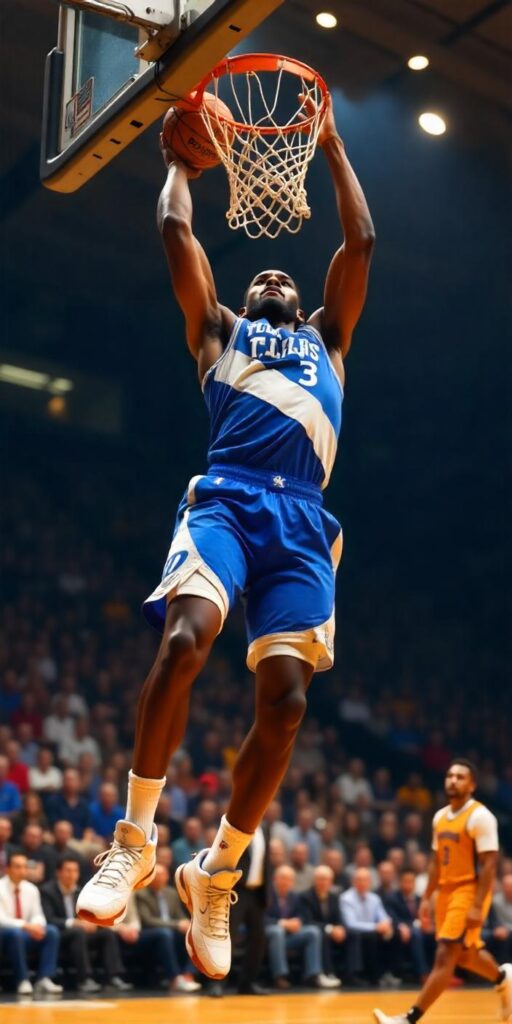
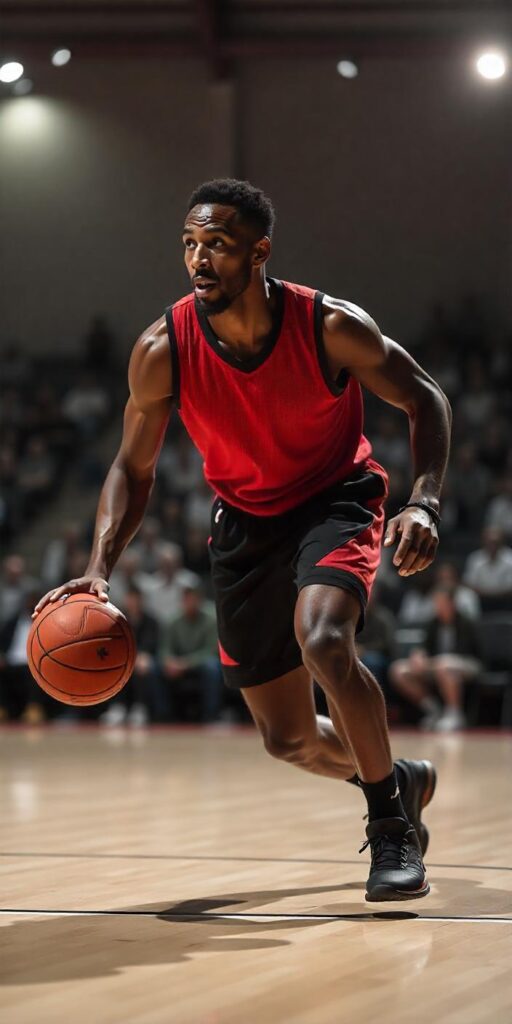

Rebuilding vs. Contending: The Eternal Dilemma Facing Every NBA Franchise
Rebuilding vs. Contending: The Eternal Dilemma Facing Every NBA Franchise
In the cyclical world of the NBA, every franchise constantly grapples with a fundamental question: Are we rebuilding for the future, or are we contending for a championship right now? This strategic crossroads shapes every decision a team makes, from draft picks and trades to coaching hires and player development.
The choice between rebuilding and contending is not always clear-cut, and it involves navigating complex factors, weighing short-term gains against long-term goals, and often making difficult choices that can define a franchise’s trajectory for years to come.
Let’s delve into this eternal dilemma and examine the pros and cons of each approach.
The Rebuilding Path: Patience and Future Potential
Rebuilding is a long-term strategy focused on accumulating assets and developing young talent with the goal of becoming a championship contender down the road. Key elements of a rebuilding strategy include:
Drafting High: Prioritizing high draft picks, often through intentionally poor performance («tanking»), to acquire top young prospects with star potential.
Developing Youth: Focusing on player development, investing in coaching and resources to nurture young players and help them reach their full potential.
Asset Accumulation: Trading veteran players for draft picks, young players, or salary cap flexibility to build a foundation for the future.
Patience and Long-Term Vision: Rebuilding requires patience and a long-term perspective. Success is not immediate, and fans must be willing to endure losing seasons with the understanding that it’s part of a larger plan.
Pros of Rebuilding:
Potential for Sustained Success: If executed well, rebuilding can lead to a team becoming a consistent contender for years to come, built on a strong core of young talent.
Financial Flexibility: Rebuilding teams often have more salary cap flexibility, allowing them to pursue free agents or make strategic trades when the time is right.
Excitement of Growth: Watching young players develop and improve can be exciting for fans, even during losing seasons, providing hope for the future.
Cons of Rebuilding:
Short-Term Losing: Rebuilding inevitably involves losing, often for multiple seasons, which can be frustrating for fans and impact team morale.
Development Uncertainty: There’s no guarantee that young players will develop into stars. Draft picks can bust, and player development is not always linear.
Risk of Fan Disengagement: Prolonged losing can lead to fan disengagement, impacting attendance and team revenue.
The Contending Path: Win-Now Urgency and Present Glory
Contending is a short-term strategy focused on maximizing the team’s chances of winning a championship now. Key elements of a contending strategy include:
Acquiring Veterans: Trading for or signing veteran players who can contribute immediately and fill specific needs to bolster the roster.
Win-Now Mentality: Prioritizing winning games in the present, often at the expense of future assets or long-term development.
Championship Focus: Every decision is made with the goal of winning a championship in the current season or near future.
Accepting Short-Term Risk: Contending teams often take on salary cap risks or trade away future assets to improve their immediate championship odds.
Pros of Contending:
Championship Potential: Contending is the only path to winning a championship, the ultimate goal for every NBA franchise.
Fan Excitement and Engagement: Winning and competing for championships creates excitement and fan engagement, boosting attendance and team revenue.
Legacy and Prestige: Winning championships builds a franchise’s legacy and prestige, attracting free agents and fostering a winning culture.
Cons of Contending:
Sustainability Challenges: Contending teams often sacrifice future assets and cap flexibility, making it harder to sustain success over the long term.
Championship Uncertainty: Even the best contending teams are not guaranteed to win a championship. Injuries, bad luck, or stronger opponents can derail even the most promising seasons.
Potential for Rapid Decline: If a contending window closes without a championship, teams can face a rapid decline as veteran players age and assets are depleted.
The Balancing Act: Finding the Right Path
The decision of whether to rebuild or contend is a complex one with no easy answers. The best approach depends on a variety of factors, including:
Current Roster and Talent Level: Assessing the team’s current strengths and weaknesses and realistic championship potential.
Draft Assets and Future Potential: Evaluating the team’s draft capital and the potential of young players already on the roster.
Market and Ownership Expectations: Considering the team’s market size, fan base, and ownership’s appetite for risk and patience.
League Landscape and Competition: Analyzing the strength of the competition in the league and the team’s realistic chances of competing with the top contenders.
Ultimately, successful franchises are often those that can effectively balance short-term competitiveness with long-term planning. Knowing when to rebuild, when to contend, and how to transition between these phases is a hallmark of strong NBA management.